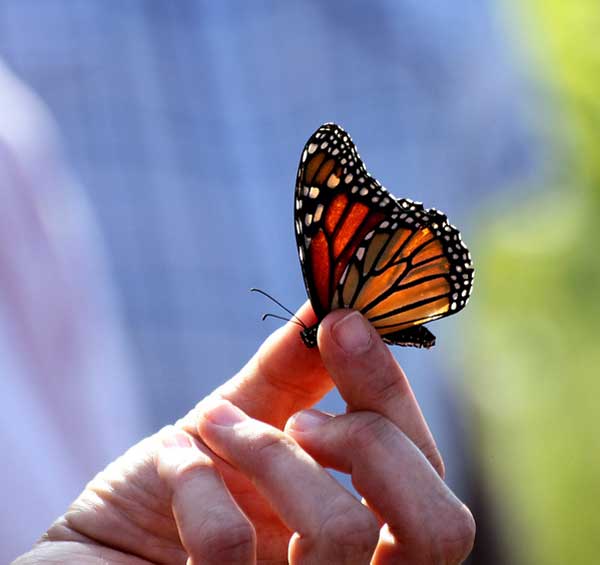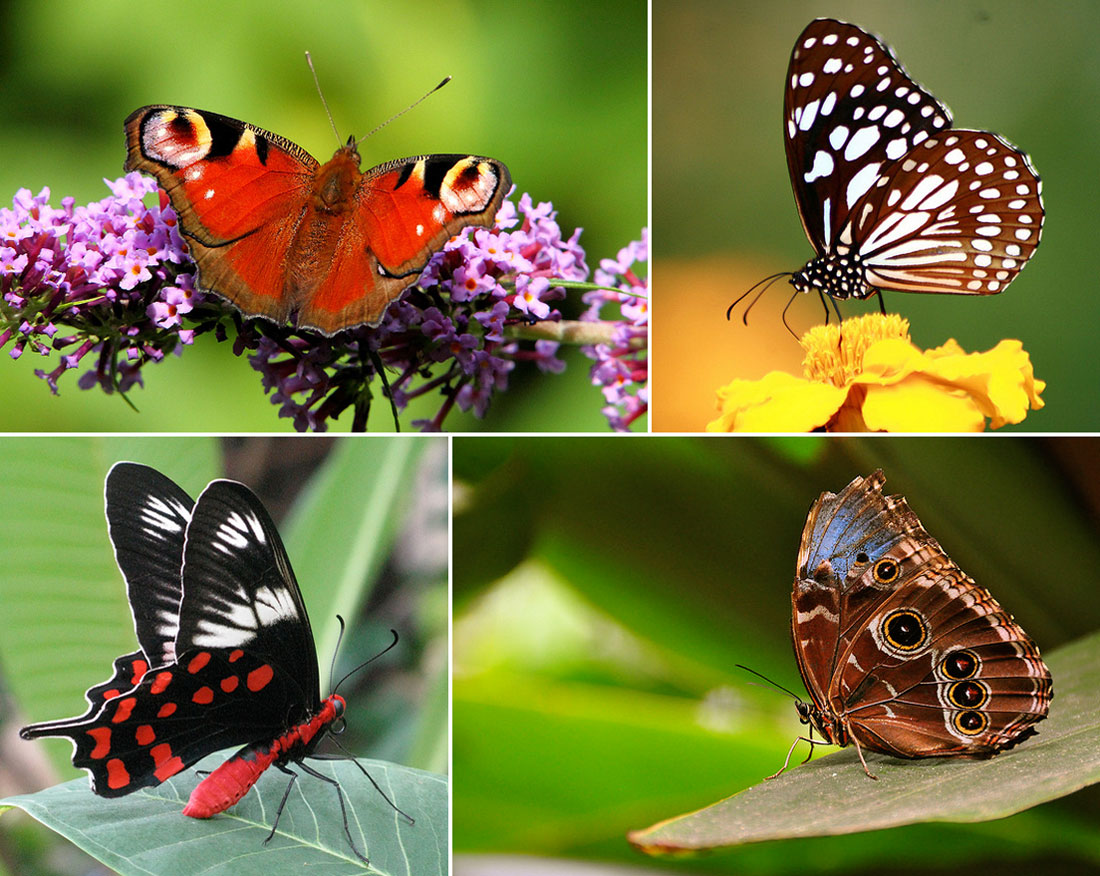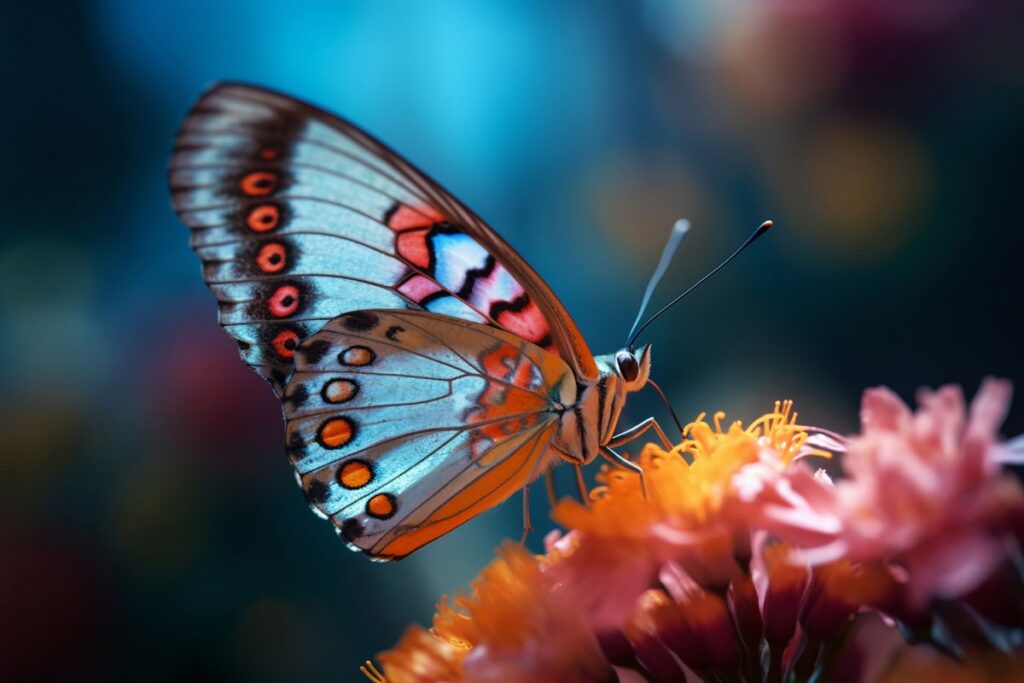- Size: The size of the butterflies can vary from around 3 mm to over 30 cm
- Speed: The top speed of butterflies is 20 km/h
- Cold-blooded: Butterflies can’t fly if their body temperature is below 30 degrees (they are cold-blooded – like crocodiles)
- Distribution: The South Pole (Antarctica) is the only continent where butterflies have never been found
- Species: There are around 24,000 butterfly species
- Butterfly dust: It’s a myth that touching a butterfly’s wings will kill it. Some of the chitin layers on its wings do fall off, but that doesn’t kill it (and it can still fly)
- Lifespan: Most butterfly species live for about 2-4 weeks. Some of the smallest species only live for a few days, while overwintering butterflies live the longest
- Oldest butterfly: The lemon butterfly (Gonepteryx rhamni) has the longest lifespan of all butterfly species; 9 – 10 months
- Food: Butterflies feed exclusively on liquid – especially nectar. Their mouthparts are made for drinking, not chewing
- Learning: If a caterpillar learns something in the larval stage, in some cases it can remember it in the adult stage (i.e. as an adult butterfly)

Fact: It’s a myth that butterflies die if you touch their wings
More facts about butterflies
- A sense of taste in your feet: Many butterfly species can taste with their feet – an ability they use mainly to find food, but also to find out if the surface they are sitting on is suitable for egg laying (i.e. if the surface is suitable food for the caterpillars)
- Animal cruelty: In some parts of the world, it’s illegal to harm or kill butterflies – such as in California, where you can be fined $500
- Muddy water: Butterflies can’t live solely on the sugar found in nectar – they also need minerals. Therefore, they sometimes suck water from mud, which is rich in minerals and salts. However, only males have this mineral requirement
- Sight: Butterflies can see about 3.5 meters ahead. They can also see ultraviolet light (which is invisible to humans), which helps them find food, as flowers emit this type of light. They can only see the colors: red, green and yellow
- Defense: Butterflies rank quite low on the food chain and have many predators. Therefore, butterflies have developed 2 different techniques to avoid being eaten: 1) camouflage; many butterflies can fold their wings to blend in with the background and 2) venom; although few butterflies are venomous, many species have colorful patterns that warn predators that they are poisonous. Some butterflies also have spots that resemble predators’ eyes, which also has a warning effect on their predators
- Transparent fingers: Although butterflies are known for their colorful wings, their wings are actually transparent. Wings are made up of many tiny layers of chitin (a protein found in insect exoskeletons) that are very thin and transparent, but reflect light at different angles, making them appear colorful. As butterflies age, some of the chitin layers fall off, leaving transparent patches on the wings
- Travel: In the fall, Monarch butterflies (Danaus plexippus) fly from the Great Lakes (in North America) to the Gulf of Mexico. When spring arrives, they travel back to North America again. This journey is over 3,200 km each way!
- Butterfly: The ‘butterfly’ swimming technique – which translates to ‘butterfly’ – was invented in 1926 by German Eric Rademacher

Attribution: Airwolfhound + Diganta Talukdar + pamsai + Armando Maynez – Flickr.com
Fact: The many patterns and colors of butterflies warn predators that butterflies are poisonous – even if they’re not!
See also:


